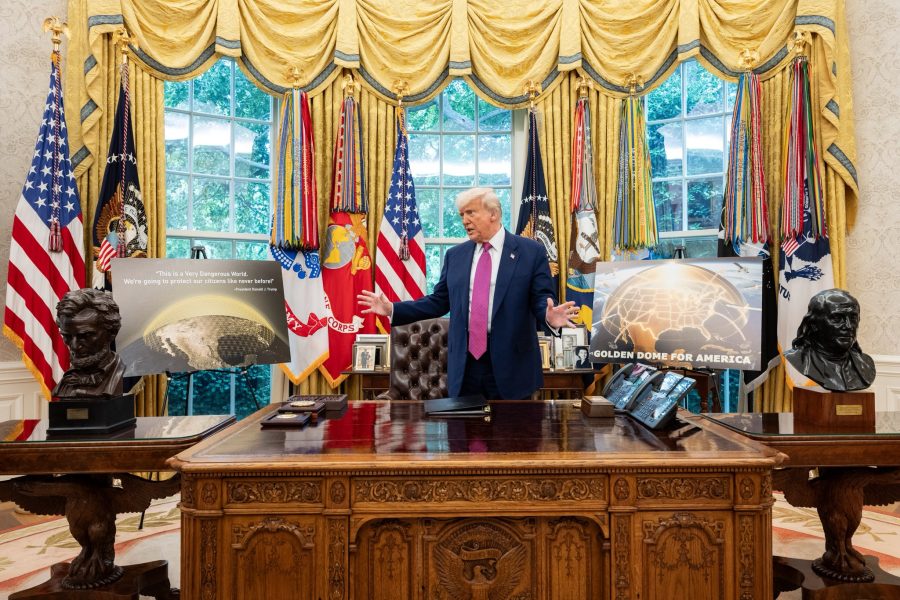The Space Force has awarded initial prototype contracts to multiple firms to develop space-based interceptors designed to take down missile threats within minutes after launch.
The effort is part of the Pentagon’s expansive Golden Dome initiative, which aims to field an advanced, layered homeland missile defense shield over the next three years. In a statement, a Space Force spokesperson said the service plans to lead a “fast-paced effort in partnership with industry.”
“The U.S. Space Force awarded multiple contracts for Space-Based Interceptor prototype agreements to multiple performers through competitive Other Transaction Agreements,” the spokesperson said. “The selection process was robust and thorough.”
The service declined to identify which companies won initial contracts due to “enhanced security measures.” The spokesperson also did not disclose the value of the awards, noting that because they are OTAs, the Space Force doesn’t have to provide those details.
The Space Force is using OTAs and prize challenges to quickly solicit a range of solutions it could leverage for Golden Dome. This batch of prototypes is focused on interceptors that can disable enemy missiles in the boost phase, just after they’re launched. The service plans to kick off a separate prototype competition in early December for kinetic midcourse interceptors designed to take out a missile in flight. It plans to award those contracts in February.
Golden Dome is a key focus for the Pentagon and has the attention of President Donald Trump, who announced the initiative in an executive order during the first week of his second term in office. During an Oval Office unveiling in May, Trump said the project will cost $175 billion and take just three years to begin initial operations—a pricetag and timeline that has come under scrutiny from defense experts who say it could cost much more depending on the scope of the project. The Defense Department hasn’t publicly revealed the details of Golden Dome’s architecture but is currently crafting an implementation plan.
The Space Force didn’t specify what funding it used for the initial SBI contracts, but it may have come from the $25 billion the Pentagon already has in hand for Golden Dome projects due to congressional budget reconciliation legislation passed this summer. While the Pentagon has some discretion on how it allocates that funding, Congress directed that $5.6 billion be used for space-based intercept capabilities.
Several companies have said they have already begun work on SBIs and other Golden Dome concepts and plan to demonstrate them in the next few years, including Northrop Grumman, Lockheed Martin, and startup Apex Space. Apex plans to launch its “Project Shadow” interceptors next summer and Lockheed is planning demonstration in 2028. Northrop, meanwhile, has begun testing SBIs on the ground and is already providing operational analysis to the Pentagon.


